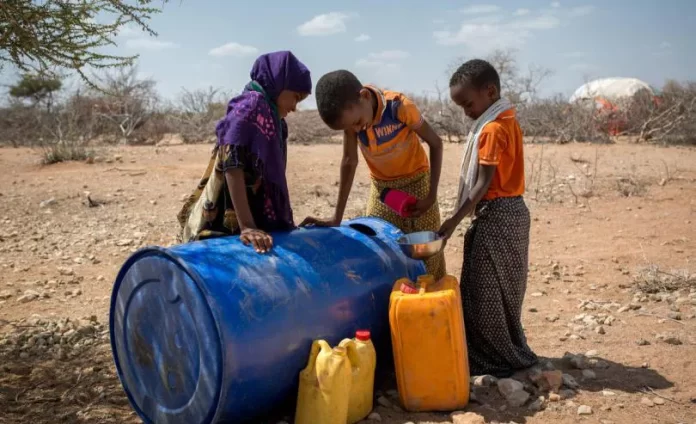According to recent research, the terrible drought in the Horn of Africa would not have occurred without the human-caused impact of the climate catastrophe.
The drought has directly affected approximately 50 million people in the Horn of Africa and another 100 million in the surrounding area. Around 20 million people are at risk of severe food insecurity, if not famine.
Since October 2020, the region has been experiencing its worst drought in 40 years, with extended dry periods broken by brief bursts of heavy rain that have frequently resulted in flash flooding. There have been five seasons in a row with rainfall amounts below normal.
At least 4.35 million people require humanitarian help, and at least 180,000 refugees have fled Somalia and South Sudan for Kenya and Ethiopia, both of which are suffering from the drought.
According to a recent assessment by the World Weather Attribution group of experts, the prolonged drought would not have occurred if not for human-caused climate change.
This is due to a lack of rainfall, but also greater temperatures caused by global warming, which have rendered the region’s soil and grassland more drier than they would typically be by increasing evaporation of moisture from the earth and plants.
The study discovered that the previous rainfall conditions would not have caused drought in a world that was 1.2 degrees Celsius cooler, and that climate change has made droughts like the present one roughly 100 times more likely to occur.
“This study shows very strongly that drought is much more than just a lack of rain,” said Friederike Otto, a senior lecturer in climate science at Imperial College London’s Grantham Institute for climate change and the environment. “The impacts of climate change strongly depend on how vulnerable we are.” One of the key findings of the newly released Intergovernmental Panel on Climate Change synthesis report is that we are far more susceptible than we previously assumed.”
According to the scientists, the poor rainfall and high temperatures in the Horn of Africa would have been less severe if the climate catastrophe had not been present. However, their research discovered that climate change was boosting rainfall at specific periods of the year.
Rainfall in the study area — southern Ethiopia, southern Somalia, and eastern Kenya — is typically concentrated in two seasons: long rains from March to May, when the majority of the yearly rainfall occurs, and a second period of short rains from October to December, when precipitation is less intense and more variable.
The study discovered that the lengthy rains are now drying up as a result of the climate crisis, with little rainfall during this season becoming twice as likely as previously, but the season of short rains is increasing wetter.
According to Joyce Kimutai, the Kenya Meteorological Department’s principal meteorologist and climate scientist, “the findings of this study show that frequent multi-year droughts, compounded with heat extremes in the main rainy season, will severely impact food security and human health in the Horn of Africa as the climate continues to warm.”
The researchers stressed that food shortages and the threat of famine are never only the product of weather, but also of how vulnerable people are and what resources they have to deal with the consequences.
“People in the Horn of Africa are no strangers to drought,” said Cheikh Kane, a climate resilience policy adviser at the Red Cross Red Crescent Climate Centre. “However, the duration of this event stretched people beyond their ability to cope.” Five seasons of below-average rainfall, along with rain-dependent livelihoods and risk multipliers such as conflict and state fragility, have resulted in a humanitarian crisis.”
The research was carried out by 19 researchers as part of the World Weather Attribution group’s work, which brings together scientists from many countries and regions, including the United Kingdom, the United States, Europe, and Africa, to use established models and techniques to determine whether events can be linked to the effects of the climate crisis.

